Ford v Ferrari is mostly true to the real events but includes dramatized moments for entertainment. While key events—like Ford’s attempt to buy Ferrari and Ken Miles’ near win at Le Mans—are accurate, certain scenes (like the wrench throwing or office lock-in) are fictionalized for storytelling purposes.
When Ford v Ferrari hit theaters in 2019, it roared into the hearts of car lovers, history buffs, and speed junkies alike. The cinematic take on the Ford versus Ferrari rivalry brought adrenaline, emotion, and iconic automotive legends like Carroll Shelby and Ken Miles to the mainstream. But while the movie thrilled, it also simplified a complex, gritty saga rooted in pride, innovation, betrayal, and pure racing obsession.
In this deep dive, we go beyond the movie to explore the true story of Ford vs Ferrari, reveal the real Ken Miles, unpack the Ford GT40’s development, and examine what really happened at the 1966 Le Mans—and beyond.
Why Did Ford Race Ferrari?
The infamous Ford Ferrari rivalry was born not just from a desire to win—but from rejection.
In the early 1960s, Henry Ford II was eager to revive the Ford Motor Company’s image. Enter Lee Iacocca, the marketing genius behind the Mustang, who proposed buying Ferrari, then the undisputed king of endurance racing. Ferrari, however, was fiercely independent. When Ford’s acquisition attempt was blocked at the last minute by Enzo Ferrari, who refused to give up control of his racing division, Ford was humiliated.
According to Go Like Hell by A.J. Baime, the book that inspired the movie, that rejection fueled Ford’s fire. He wasn’t just going to compete—he was going to beat Ferrari at Le Mans, the most prestigious race in the world.
The Real Story of Ford vs Ferrari: Fact vs Fiction
1. The Development of the Ford GT40
Contrary to what the film may suggest, the GT40 project didn’t start with Carroll Shelby. Ford’s first attempt came from a deal with British firm Lola Cars, whose chassis served as the foundation. After two failed seasons, Ford turned to Carroll Shelby, a former driver and self-made performance genius.
Shelby, along with his trusted engineer Phil Remington, and test driver Ken Miles, took the GT40 and pushed it to its limits. They improved aerodynamics, reliability, and power to make the car competitive—something the movie captures fairly well. But what’s missing? The sleepless nights, internal politics, and corporate red tape that nearly derailed the project.
2. The Real Ken Miles Story
The heart of the movie lies in the bond between Shelby and Miles. Ken Miles, a British-born engineer and driver, was the linchpin to making the GT40 a winner. His rough edges and blunt honesty made him unpopular with Ford’s executives, especially Leo Beebe, the company man portrayed as the villain in the film.
Miles' skills were undeniable. He helped reshape the GT40, leading it to victory at Daytona and Sebring. At Le Mans 1966, he dominated—but the corporate decision to stage a photo finish cost him the individual win.
The film ends with his tragic death, but omits that Miles died testing the next-generation Ford J-car, not the GT40 itself. His crash at Riverside International Raceway highlighted just how dangerous and relentless this pursuit was.
Le Mans 1966: The Defining Moment
Le Mans isn’t just a race—it’s a 24-hour test of engineering, endurance, and luck. Ferrari’s Le Mans history was dominant through the early 1960s, winning six straight races from 1960 to 1965.
Ford, on the other hand, endured embarrassing failures before finally getting it right. In 1966, Ford entered three GT40s, and for the first time, everything clicked.
Ken Miles was poised to win until Ford executives ordered the cars to finish together for a PR photo. Because Bruce McLaren and Chris Amon’s car had started farther back, they were declared the winners. It was a devastating moment for Miles.
This move has sparked endless debate. Was it betrayal? Or just business?
Behind the Scenes: Fact vs Fiction
While Ford v Ferrari is praised for its heart and performances, it took liberties. Here are some key differences:
- Leo Beebe was portrayed as an antagonist, but some insiders argue he was just doing his job.
- Shelby didn’t really lock a Ford exec in an office or punch Ken Miles—those were dramatizations.
- The hood-slamming scene? That moment of Miles taking a wrench to the car’s hood was fictional but represented his frustration with the bureaucracy he faced.
What Happened After Ford Beat Ferrari?
Ford’s victory at Le Mans in 1966 was just the beginning. The GT40 went on to win Le Mans four years in a row (1966–1969), solidifying Ford’s place in racing history.
Ferrari never regained its dominance at Le Mans, but continued to thrive in Formula One. Enzo Ferrari, known for his stoic nature, never publicly commented on Ford’s wins—but insiders say he took it personally.
Ford, meanwhile, retired from endurance racing by the early ‘70s, their mission complete.
Untold Stories: The People Behind the Machines
While Shelby and Miles are now legends, many key players made this rivalry legendary:
- Phil Remington: Shelby’s top engineer. Without Remington’s innovations, the GT40 might never have made it to the starting line.
- John Wyer: Key in refining the GT40 into a true endurance car.
- Dan Gurney: One of the drivers who helped make the GT40 a winner.
- Lee Iacocca: The visionary executive who connected marketing and motorsport.
Their contributions often go unsung but were essential to Ford’s victory.
How the Rivalry Changed the Auto Industry
The Ford versus Ferrari feud reshaped automotive priorities:
- Performance marketing became mainstream.
- Manufacturers invested in racing to drive consumer appeal.
- The GT40’s success proved that America could beat Europe at its own game.
And today? The spirit of that competition lives on in cars like the Ford GT and Ferrari’s never-ending pursuit of speed.
Want to Learn More About Iconic Cars, Coverage & Costs?
Explore the Noble Quote Learning Center →
We break down coverage options, auto costs, repair data, and more—whether you're a car lover, daily commuter, or collector.
Conclusion: More Than a Movie—A Motoring Legend
The Ford vs Ferrari saga isn’t just a great story—it’s a turning point in automotive history. It showed what happens when pride meets performance, when corporate titans clash on the racetrack, and when the underdog rises.
Whether you saw the movie or you're just discovering the Ford Ferrari rivalry, remember this: under every hood lies a story. At Noble Quote, we help you protect yours.
Ford vs. Ferrari: Real Questions People Ask About the True Story, the Movie, and the Rivalry
How accurate is the Ford vs Ferrari movie?
What really happened between Ford and Ferrari?
In 1963, Ford tried to buy Ferrari. Enzo Ferrari rejected the deal, sparking a fierce rivalry. Ford responded by developing the GT40 to beat Ferrari at Le Mans, ultimately winning in 1966 and ending Ferrari's dominance in endurance racing.
Why did Ford want to buy Ferrari in the first place?
Ford wanted to revitalize its image by acquiring a racing powerhouse. The plan was to buy Ferrari’s road car and racing divisions. Enzo Ferrari rejected the offer over concerns about losing control of his motorsport team.
Did Ken Miles win Le Mans in 1966?
No, Ken Miles did not win. Despite leading much of the race, Ford ordered a photo finish. Because another Ford GT40 started farther back, Miles was placed second due to race timing rules.
What happened to Ken Miles after Le Mans?
Ken Miles tragically died just months later while testing the Ford J-car at Riverside Raceway. His death led to major safety improvements in race car design and development.
Who was Carroll Shelby and what was his role?
Carroll Shelby was a former racer turned car builder who helped develop the Ford GT40. He worked closely with Ken Miles to improve performance and ultimately guided Ford to victory over Ferrari at Le Mans.
How many times did Ford beat Ferrari at Le Mans?
Ford beat Ferrari in 1966 and went on to win Le Mans four consecutive times from 1966 to 1969 with the GT40, ending Ferrari's winning streak and asserting American dominance in endurance racing.
What is the Ford GT40 and why is it important?
The Ford GT40 was a high-performance race car developed specifically to beat Ferrari at Le Mans. Its success changed the landscape of motorsports and solidified Ford's place in racing history.
Is the Go Like Hell book more accurate than the movie?
Yes, Go Like Hell by A.J. Baime offers a deeper and more nuanced look at the rivalry, including behind-the-scenes politics, engineering challenges, and the real personalities involved.
How did the Ford vs Ferrari rivalry change the auto industry?
It shifted automakers’ focus toward performance, engineering, and marketing through motorsports. Ford’s success helped influence the rise of muscle cars and consumer interest in high-performance vehicles.
Suggestions for you
Read MoreLet’s work together
Every week we showcase three charitable organizations that our donations are sent to. Our clients are able to choose which of these three will receive their gift when they add coverage to their vehicle...


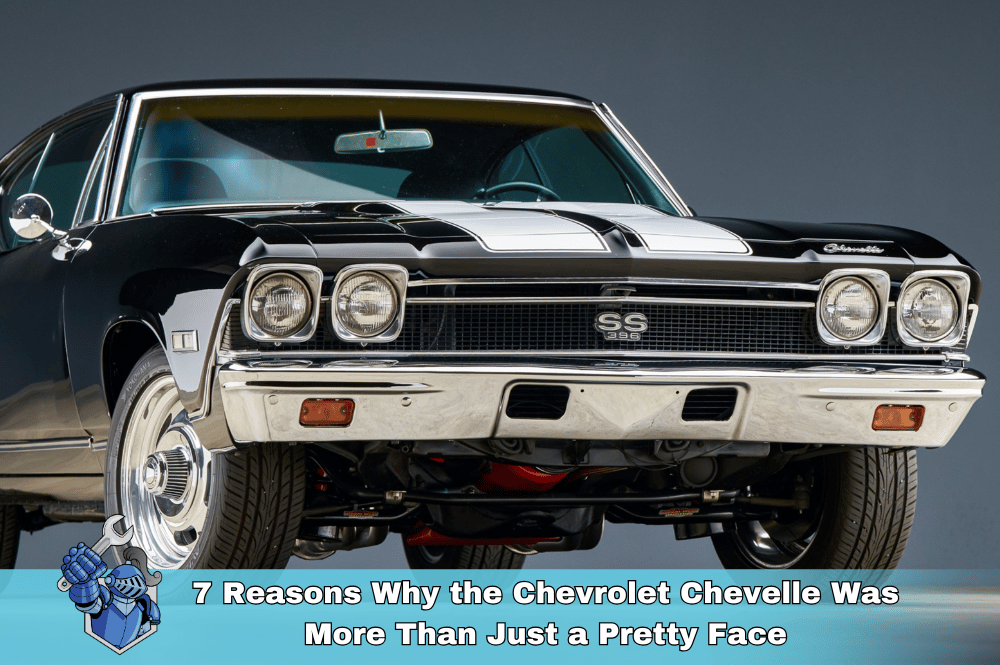 7 Reasons Why the Chevrolet Chevelle Was More Than Just a Pretty Face
7 Reasons Why the Chevrolet Chevelle Was More Than Just a Pretty Face Should You Buy a Truck? The Ultimate Pros and Cons List
Should You Buy a Truck? The Ultimate Pros and Cons List Ford Bronco: A Legend Reborn – Explore its Wild History & Modern Muscle
Ford Bronco: A Legend Reborn – Explore its Wild History & Modern Muscle Shifting Gears: A Deep Dive into Extended Warranties for Automatic and Manual Transmissions
Shifting Gears: A Deep Dive into Extended Warranties for Automatic and Manual Transmissions Hope for the Warriors: Standing Strong for Our Veterans and Military Families
Hope for the Warriors: Standing Strong for Our Veterans and Military Families Looking for the Perfect Gift for a Car Enthusiast? Try These 10 Puzzles
Looking for the Perfect Gift for a Car Enthusiast? Try These 10 Puzzles What is an ASE Certified Mechanic? (And Why Should You Care)
What is an ASE Certified Mechanic? (And Why Should You Care)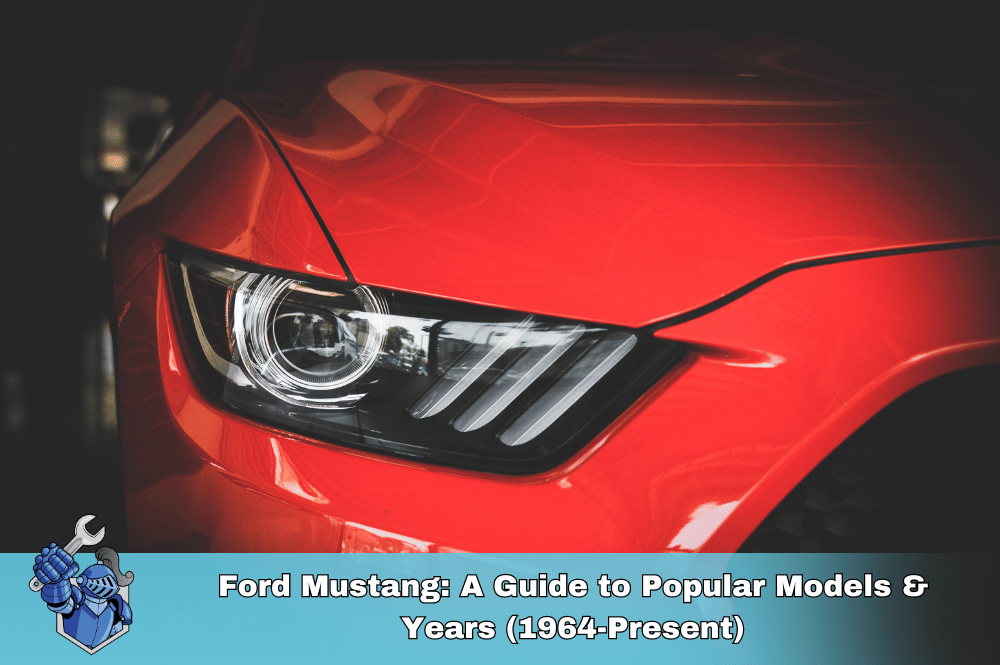 Ford Mustang: A Guide to Popular Models & Years (1964-Present)
Ford Mustang: A Guide to Popular Models & Years (1964-Present) Is the Ford Explorer Reliable? What Owners Need to Know
Is the Ford Explorer Reliable? What Owners Need to Know Hello, Robot Neighbor: The Dawn of Everyday AI and Its Impact
Hello, Robot Neighbor: The Dawn of Everyday AI and Its Impact From Solid Axle to Supercar: The Ultimate Guide to Every Corvette Generation (C1–C8)
From Solid Axle to Supercar: The Ultimate Guide to Every Corvette Generation (C1–C8) The EV Territory Wars: US Automakers Fight for Survival
The EV Territory Wars: US Automakers Fight for Survival Drive Away Richer? Credit Card Secrets for Smart Car Buying
Drive Away Richer? Credit Card Secrets for Smart Car Buying Understanding Car Leasing: A Complete Guide for First-Timers
Understanding Car Leasing: A Complete Guide for First-Timers Family First, Finances Second? The Real Cost of Owning a Toyota Highlander
Family First, Finances Second? The Real Cost of Owning a Toyota Highlander The Crypto Long Game: Proven Strategies for Building Generational Wealth
The Crypto Long Game: Proven Strategies for Building Generational Wealth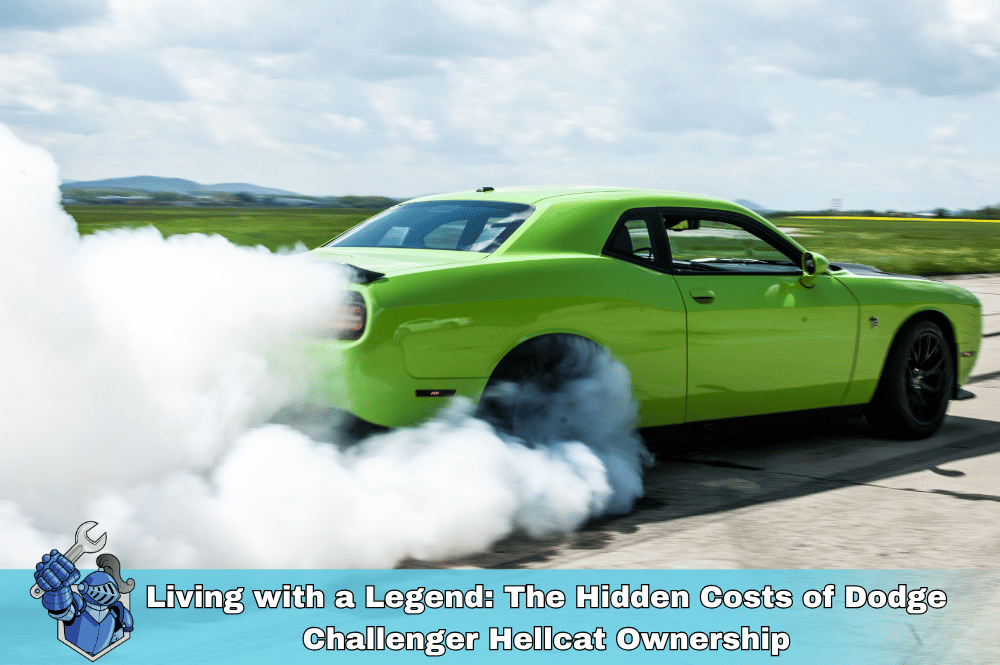 Living with a Legend: The Hidden Costs of Dodge Challenger Hellcat Ownership
Living with a Legend: The Hidden Costs of Dodge Challenger Hellcat Ownership Beyond Self-Driving: OpenAI and the Next Generation of Automotive Intelligence
Beyond Self-Driving: OpenAI and the Next Generation of Automotive Intelligence Blockchain Basics: The Technology Behind Cryptocurrencies
Blockchain Basics: The Technology Behind Cryptocurrencies New vs. Used: A Financial Showdown for Your Next Vehicle
New vs. Used: A Financial Showdown for Your Next Vehicle Depreciation Demystified: Planning for Your Car’s Future Value
Depreciation Demystified: Planning for Your Car’s Future Value Smart Buyer’s Guide: Ford F-250 Review and Long-Term Ownership Costs (2022–2024)
Smart Buyer’s Guide: Ford F-250 Review and Long-Term Ownership Costs (2022–2024) DIY Danger? The Financial Risks of Handling Car Repairs Yourself
DIY Danger? The Financial Risks of Handling Car Repairs Yourself The Downtime Trap: How Car Repairs Can Cost You More Than Just the Bill
The Downtime Trap: How Car Repairs Can Cost You More Than Just the Bill Tech Troubles Ahead? The Rising Costs of Modern Vehicle Repairs
Tech Troubles Ahead? The Rising Costs of Modern Vehicle Repairs Drive Smart, Save Smarter: Your Guide to Budgeting for Car Care
Drive Smart, Save Smarter: Your Guide to Budgeting for Car Care Don’t Let Tariffs Hike Your Bills: The Smart Way an Extended Warranty Saves You on Car Repairs
Don’t Let Tariffs Hike Your Bills: The Smart Way an Extended Warranty Saves You on Car Repairs Chevy Colorado: Unpacking the Features and the Real Cost of Ownership
Chevy Colorado: Unpacking the Features and the Real Cost of Ownership Safe Kids: Your Comprehensive Guide to Child Car Seat Installation Tips and Guidelines
Safe Kids: Your Comprehensive Guide to Child Car Seat Installation Tips and Guidelines Unlock Better Opportunities: Your Guide to Understanding and Improving Your Credit Score
Unlock Better Opportunities: Your Guide to Understanding and Improving Your Credit Score Beyond the Hype: A Realistic Look at Hyundai Ioniq 5 Ownership Costs and Performance
Beyond the Hype: A Realistic Look at Hyundai Ioniq 5 Ownership Costs and Performance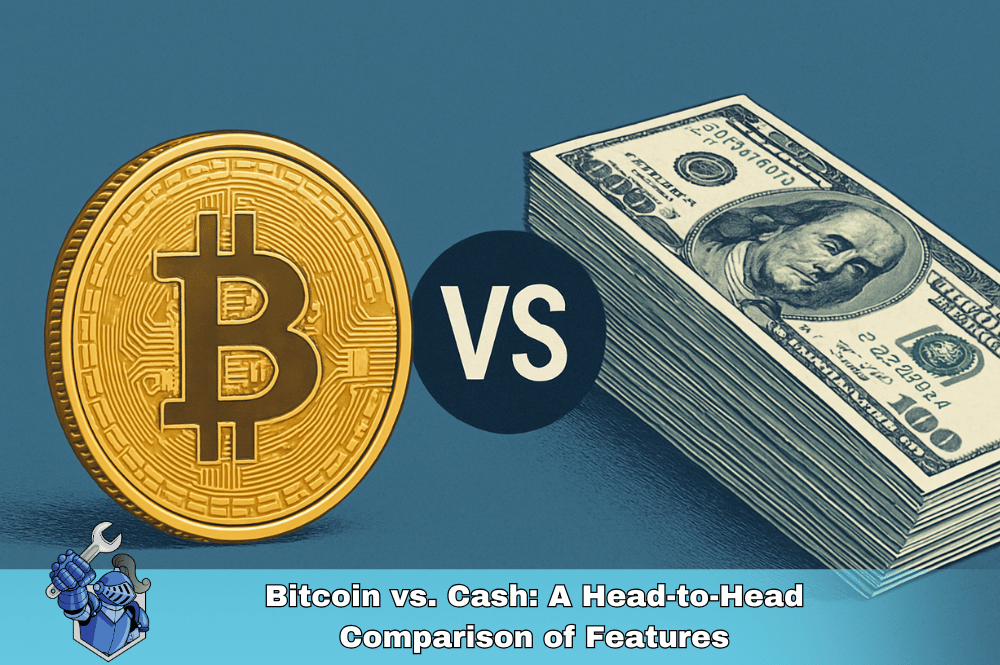 Bitcoin vs. Cash: A Head-to-Head Comparison of Features
Bitcoin vs. Cash: A Head-to-Head Comparison of Features Decoding Your Wallet: The Benefits of Using Cash and Credit Wisely
Decoding Your Wallet: The Benefits of Using Cash and Credit Wisely Kia Telluride Review: Unpacking the Features and the Real Cost to Own
Kia Telluride Review: Unpacking the Features and the Real Cost to Own NobleQuote: Best Auto Protection, Not Just the Oldest
NobleQuote: Best Auto Protection, Not Just the Oldest What is a Home Warranty and Do You Need One?
What is a Home Warranty and Do You Need One? Recession-Proof Your Ride: Why an Extended Car Warranty Makes Sense Now
Recession-Proof Your Ride: Why an Extended Car Warranty Makes Sense Now RV Road Trip Ready: Secure Your Adventures with Extended Warranty Coverage
RV Road Trip Ready: Secure Your Adventures with Extended Warranty Coverage Stop Paying for Potholes: The Smart Way to Protect Your Wheels and Tires
Stop Paying for Potholes: The Smart Way to Protect Your Wheels and Tires Don’t Get Stuck With Repair Bills: Ford Edge Warranty Coverage Explained
Don’t Get Stuck With Repair Bills: Ford Edge Warranty Coverage Explained Navigating the Online Vehicle Marketplace: Your Comprehensive Guide to Finding the Perfect Car or Truck
Navigating the Online Vehicle Marketplace: Your Comprehensive Guide to Finding the Perfect Car or Truck Maximize Your Savings: Understanding Your Vehicle Service Contract Deductible Options
Maximize Your Savings: Understanding Your Vehicle Service Contract Deductible Options Vehicle Service Contracts for SUVs and Trucks: Protecting Your Investment
Vehicle Service Contracts for SUVs and Trucks: Protecting Your Investment What to Do If Your Vehicle Service Contract Claim Is Denied
What to Do If Your Vehicle Service Contract Claim Is Denied What Happens to My Vehicle Service Contract If I Sell My Car?
What Happens to My Vehicle Service Contract If I Sell My Car? Extended Car Warranty with Active Factory Coverage: Smart Move or Waste of Money?
Extended Car Warranty with Active Factory Coverage: Smart Move or Waste of Money? Nissan Pathfinder Common Problems: A Complete Repair Guide
Nissan Pathfinder Common Problems: A Complete Repair Guide DIY Oil Change: Do It Better Than the Pros (and Save Money!)
DIY Oil Change: Do It Better Than the Pros (and Save Money!) Keeping vs. Selling: Weighing Your Car Options & the Value of an Extended Car Warranty
Keeping vs. Selling: Weighing Your Car Options & the Value of an Extended Car Warranty Beyond Coverage: How Extended Warranties Can Expedite Your Car Repairs Amid Supply Chain Challenges
Beyond Coverage: How Extended Warranties Can Expedite Your Car Repairs Amid Supply Chain Challenges Protecting Your Ride Like Jalen Protects the Pocket: Cars, Eagles, and Smart Investments
Protecting Your Ride Like Jalen Protects the Pocket: Cars, Eagles, and Smart Investments Rivian R1S Review: Is This the Ultimate Electric Adventure SUV? (2025)
Rivian R1S Review: Is This the Ultimate Electric Adventure SUV? (2025) The Truck Owner’s Peace of Mind: Why Noble Quote Leads the Pack in Truck Repair Protection
The Truck Owner’s Peace of Mind: Why Noble Quote Leads the Pack in Truck Repair Protection Noble Quote: Driving with Confidence, Protected from Unexpected Repairs
Noble Quote: Driving with Confidence, Protected from Unexpected Repairs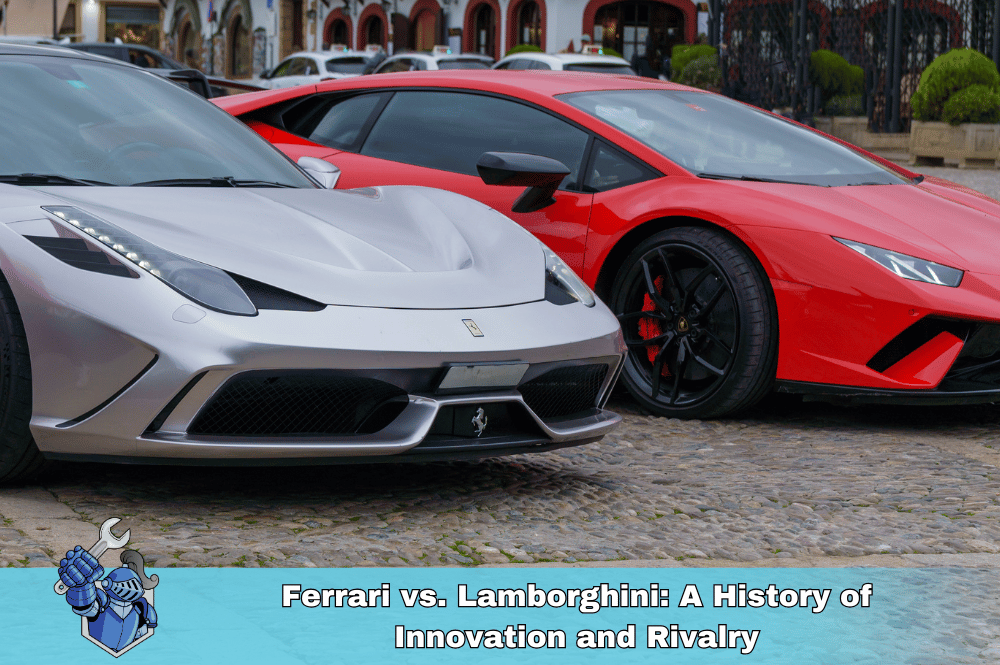 Ferrari vs. Lamborghini: A History of Innovation and Rivalry
Ferrari vs. Lamborghini: A History of Innovation and Rivalry Porsche GT3: Beyond the Numbers – The Soul-Stirring GT3 Experience
Porsche GT3: Beyond the Numbers – The Soul-Stirring GT3 Experience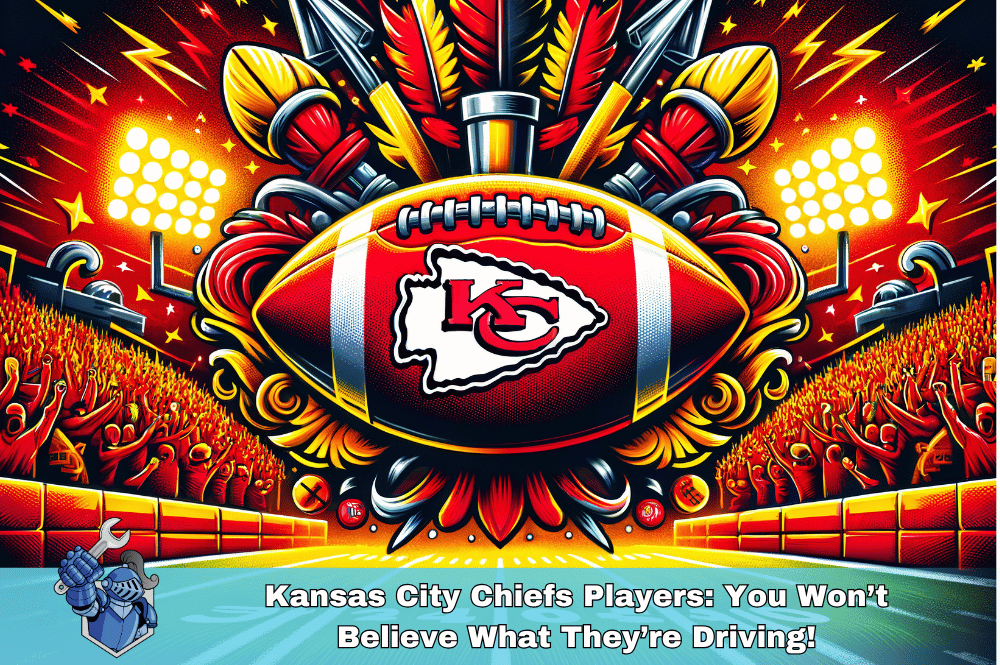 Kansas City Chiefs Players: You Won’t Believe What They’re Driving!
Kansas City Chiefs Players: You Won’t Believe What They’re Driving!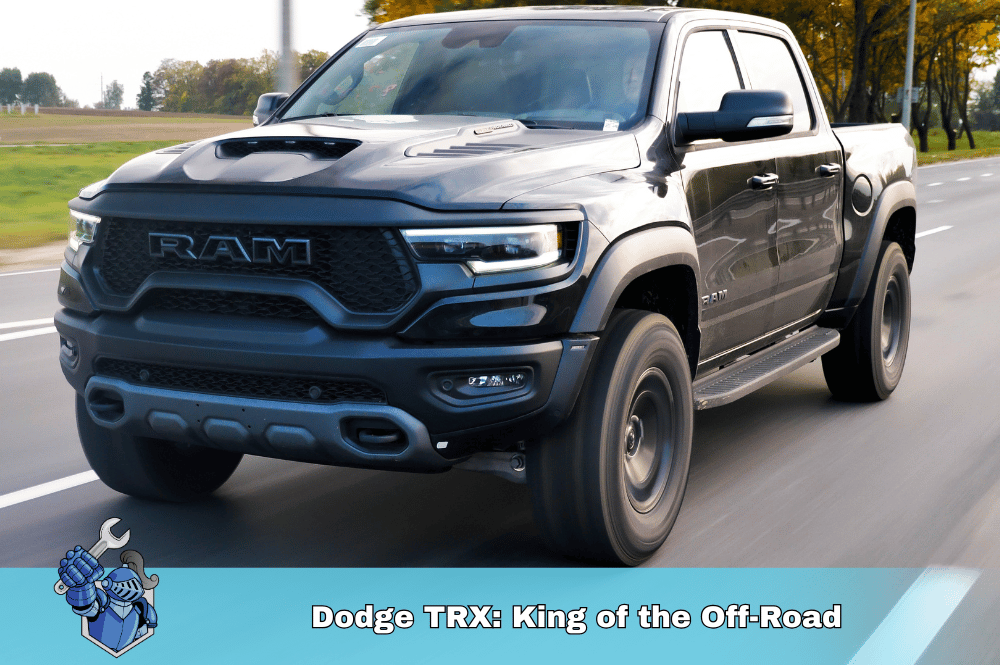 Dodge TRX: King of the Off-Road
Dodge TRX: King of the Off-Road Ford Raptor Extended Warranty Guide: Conquer the Road with Confidence
Ford Raptor Extended Warranty Guide: Conquer the Road with Confidence Subaru Extended Warranty: Your Ultimate Guide
Subaru Extended Warranty: Your Ultimate Guide Protect Your Car & the Planet: Introducing NobleQuote's Green Choice Program
Protect Your Car & the Planet: Introducing NobleQuote's Green Choice Program Mazda Extended Warranty: Your Comprehensive Guide
Mazda Extended Warranty: Your Comprehensive Guide Chevy Malibu Ownership: Staying Ahead of the Repair Curve
Chevy Malibu Ownership: Staying Ahead of the Repair Curve The Most Common Car Breakdowns of 2025 (And How to Avoid Them)
The Most Common Car Breakdowns of 2025 (And How to Avoid Them) Supercar Dreams on a Budget: The Most Affordable Exotics for First-Time Buyers
Supercar Dreams on a Budget: The Most Affordable Exotics for First-Time Buyers Porsche Cayenne Engine Problems: What to Watch For
Porsche Cayenne Engine Problems: What to Watch For The Future of Racing: Electric Cars, Autonomous Vehicles, and Beyond
The Future of Racing: Electric Cars, Autonomous Vehicles, and Beyond We've Moved! Noble Quote's New Home at the Lake of the Ozarks
We've Moved! Noble Quote's New Home at the Lake of the Ozarks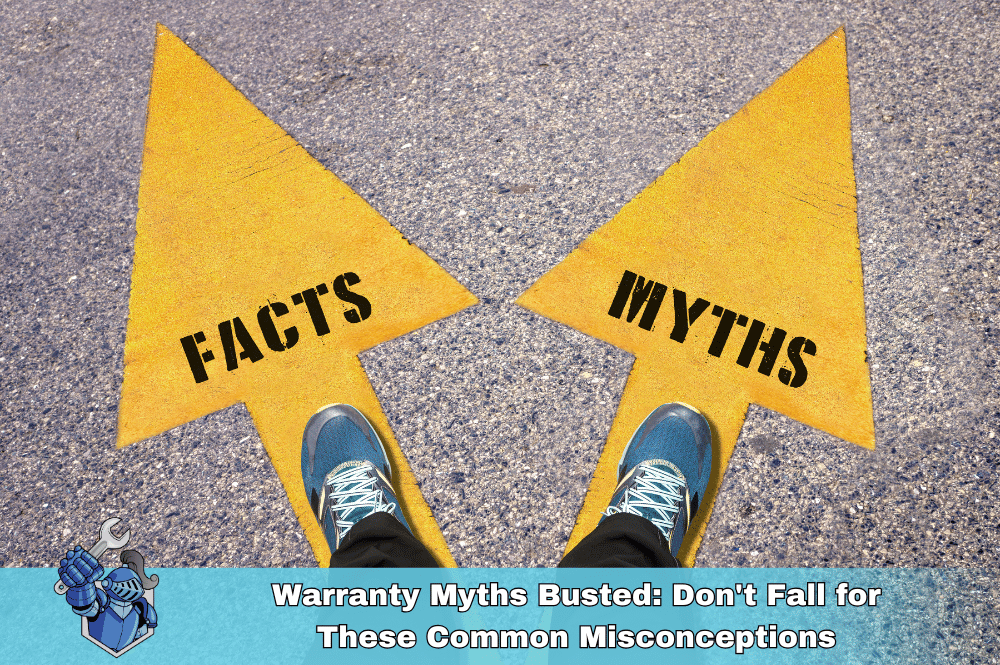 Warranty Myths Busted: Don't Fall for These Common Misconceptions
Warranty Myths Busted: Don't Fall for These Common Misconceptions The "New Car Smell" Doesn't Last Forever: Protecting Your Investment Long-Term
The "New Car Smell" Doesn't Last Forever: Protecting Your Investment Long-Term Forza: The Perfect Blend of Simulation and Arcade Fun
Forza: The Perfect Blend of Simulation and Arcade Fun If NASCAR Had Car Warranties: The Pit Stop Chaos You’d See
If NASCAR Had Car Warranties: The Pit Stop Chaos You’d See 5 Car Problems That’ll Make You Wish You Had an Extended Warranty
5 Car Problems That’ll Make You Wish You Had an Extended Warranty Beyond F1: Exploring the World's Most Extreme Racing Series
Beyond F1: Exploring the World's Most Extreme Racing Series The Greatest NASCAR Rivalries of All Time: On-Track Battles and Off-Track Drama
The Greatest NASCAR Rivalries of All Time: On-Track Battles and Off-Track Drama Chevy Suburban Repair Guide: Common Problems
Chevy Suburban Repair Guide: Common Problems Cupid's Got Horsepower: Rev Up Your Valentine's Day!
Cupid's Got Horsepower: Rev Up Your Valentine's Day! 10 Things You Didn't Know About James Bond’s Aston Martin DB5
10 Things You Didn't Know About James Bond’s Aston Martin DB5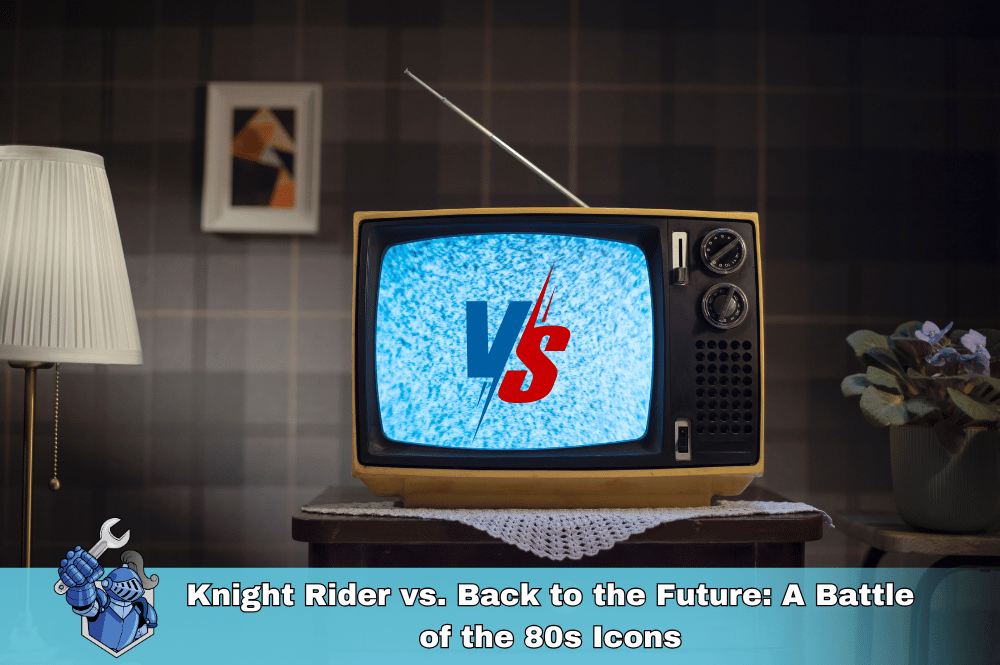 Knight Rider vs. Back to the Future: A Battle of the 80s Icons
Knight Rider vs. Back to the Future: A Battle of the 80s Icons Cadillac Escalade: Mastering the Maintenance
Cadillac Escalade: Mastering the Maintenance Charging Your Peace of Mind: Using a Credit Card to Buy a Car Warranty
Charging Your Peace of Mind: Using a Credit Card to Buy a Car Warranty Noble Quote vs. Omega Auto Care: Which Auto Warranty Is Right for You?
Noble Quote vs. Omega Auto Care: Which Auto Warranty Is Right for You? Best Extended Warranty for Your Ford: Noble Quote or Ford Protect?
Best Extended Warranty for Your Ford: Noble Quote or Ford Protect? Extended Warranty vs. Self-Insuring: Which Is Right for You?
Extended Warranty vs. Self-Insuring: Which Is Right for You? Don’t Buy a Honda Warranty Before Reading This! Noble Quote vs. HondaCare
Don’t Buy a Honda Warranty Before Reading This! Noble Quote vs. HondaCare Mercedes-Benz G-Class Review: On and Off-Road Performance, Features, and Price
Mercedes-Benz G-Class Review: On and Off-Road Performance, Features, and Price Avoid Costly Repairs: Noble Quote vs. Ox Car Care Warranties
Avoid Costly Repairs: Noble Quote vs. Ox Car Care Warranties Affordable Protection: Noble Quote vs. Autopom Warranty Pricing
Affordable Protection: Noble Quote vs. Autopom Warranty Pricing CarMax MaxCare vs. Noble Quote: Extended Warranty Showdown
CarMax MaxCare vs. Noble Quote: Extended Warranty Showdown Top 5 Most Expensive Car Repairs Your Manufacturer Warranty WON'T Cover
Top 5 Most Expensive Car Repairs Your Manufacturer Warranty WON'T Cover From Referrals to Reviews: Finding the Perfect Repair Shop for You
From Referrals to Reviews: Finding the Perfect Repair Shop for You Speaking Car: How to Clearly Communicate with Your Mechanic
Speaking Car: How to Clearly Communicate with Your Mechanic Selling Your Soul for an Extended Car Warranty (And Why They Keep Calling)
Selling Your Soul for an Extended Car Warranty (And Why They Keep Calling) Level Up Your EV Charging Knowledge: A Guide to Charger Types
Level Up Your EV Charging Knowledge: A Guide to Charger Types Why Is My Car Heater Blowing Cold Air?
Why Is My Car Heater Blowing Cold Air? Bumper to Bumper Extended Warranty: What Does it Really Mean?
Bumper to Bumper Extended Warranty: What Does it Really Mean?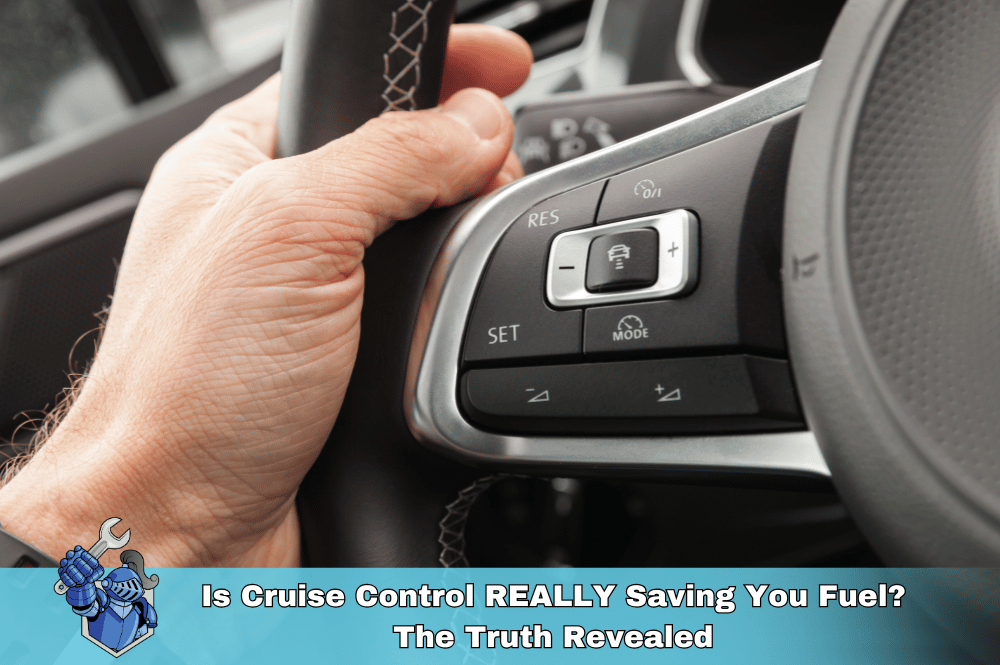 Is Cruise Control REALLY Saving You Fuel? The Truth Revealed
Is Cruise Control REALLY Saving You Fuel? The Truth Revealed Boost Your EV's Range: Tips and Tricks for Maximum Mileage
Boost Your EV's Range: Tips and Tricks for Maximum Mileage What to Do When the Dealership Makes Warranty Cancellation a Hassle
What to Do When the Dealership Makes Warranty Cancellation a Hassle Why Can’t I Include My Warranty in My Car Financing? Answers to Your Top Questions
Why Can’t I Include My Warranty in My Car Financing? Answers to Your Top Questions Car Safety Technology: How Advanced Driver-Assistance Systems (ADAS) Are Changing the Game (and Your Insurance Rates)
Car Safety Technology: How Advanced Driver-Assistance Systems (ADAS) Are Changing the Game (and Your Insurance Rates) Skip the Dealership: The Rise of Online Car Buying
Skip the Dealership: The Rise of Online Car Buying Tesla Cybertruck: Overpriced or Over-the-Top Awesome?
Tesla Cybertruck: Overpriced or Over-the-Top Awesome? Selling Your Car in 2025? Don’t Make These Mistakes!
Selling Your Car in 2025? Don’t Make These Mistakes! 2015 Ford Explorer: Avoid Costly Repairs with the Right Extended Warranty
2015 Ford Explorer: Avoid Costly Repairs with the Right Extended Warranty Maximize Your Tesla Warranty: Smart Strategies for Extended Coverage
Maximize Your Tesla Warranty: Smart Strategies for Extended Coverage 2008 Toyota Camry: Common Repairs and Why Extended Coverage is a Smart Investment
2008 Toyota Camry: Common Repairs and Why Extended Coverage is a Smart Investment Electric Vehicles 101: What You Need to Know Before Making the Switch
Electric Vehicles 101: What You Need to Know Before Making the Switch 2016 Jeep Wrangler Extended Warranty: Coverage & Options
2016 Jeep Wrangler Extended Warranty: Coverage & Options Save on Car Repairs: NobleQuote vs. Toco Extended Warranty Review
Save on Car Repairs: NobleQuote vs. Toco Extended Warranty Review Honda A/C Compressor Failure: Causes, Symptoms & Repair Costs
Honda A/C Compressor Failure: Causes, Symptoms & Repair Costs 2015 Nissan Altima Warranty Expired? Get Extended Coverage Today!
2015 Nissan Altima Warranty Expired? Get Extended Coverage Today! Ford Power Steering Repair: Problems & Solutions
Ford Power Steering Repair: Problems & Solutions Car Scratches Driving You Crazy? 10 Steps to Fix Them Yourself
Car Scratches Driving You Crazy? 10 Steps to Fix Them Yourself Why Your Headlights Are Turning Yellow (And How to Prevent It)
Why Your Headlights Are Turning Yellow (And How to Prevent It) That Annoying Hemi Tick: Why It Happens & How to Stop It
That Annoying Hemi Tick: Why It Happens & How to Stop It Zombie Apocalypse Survival Tip #1: Get an Extended Warranty (Brains Not Included)
Zombie Apocalypse Survival Tip #1: Get an Extended Warranty (Brains Not Included) Ford F-150: This Ain't Your Grandpa's Pickup!
Ford F-150: This Ain't Your Grandpa's Pickup! 'Tis the Season to Be Jolly... and Protected: Why an Extended Warranty is the Gift That Keeps on Giving
'Tis the Season to Be Jolly... and Protected: Why an Extended Warranty is the Gift That Keeps on Giving The Car Repair Lottery: Are You Feeling Lucky?
The Car Repair Lottery: Are You Feeling Lucky? Extended Warranty Secrets: Unlocking Surprising Perks You Didn’t Know Existed!
Extended Warranty Secrets: Unlocking Surprising Perks You Didn’t Know Existed! Car Trouble? Your Insurance Might NOT Cover This!
Car Trouble? Your Insurance Might NOT Cover This! Nissan Frontier: Conquer Any Terrain in Style and Comfort
Nissan Frontier: Conquer Any Terrain in Style and Comfort Is Your Car a Ticking Time Bomb? The Unexpected Costs of Car Ownership
Is Your Car a Ticking Time Bomb? The Unexpected Costs of Car Ownership Off-Roading vs. Overlanding: What’s the Difference?
Off-Roading vs. Overlanding: What’s the Difference?